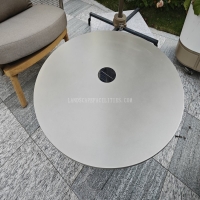Welcome to the website for landscape facilities products and knowledge.
How does the trash can's design impact its ability to be used in high-altitude mountainous regions?
The design of a trash can plays a critical role in its effectiveness in high-altitude mountainous regions, where extreme weather, rugged terrain, and environmental sensitivity demand specialized solutions.
1. Material Durability: Trash cans in these areas must withstand freezing temperatures, UV exposure, and strong winds. Heavy-duty plastics, corrosion-resistant metals, or reinforced composites are preferred to prevent cracking or degradation.
2. Secure Lid Mechanisms: High winds can scatter waste, so designs often feature weighted bases, locking lids, or aerodynamic shapes to keep contents contained. Some models include straps or anchors for additional stability.
3. Portability and Installation: Lightweight yet sturdy designs allow for easier transport to remote locations, while modular systems enable assembly on uneven ground without permanent fixtures.
4. Wildlife Resistance: In habitats with bears or other animals, tamper-proof latches and odor-blocking materials are essential to prevent scavenging.
5. Eco-Conscious Features: Biodegradable liners or segregated compartments for recyclables help minimize environmental impact in fragile ecosystems.
By addressing these challenges, modern trash can designs improve waste management in high-altitude areas, supporting both conservation efforts and visitor convenience.
Related search:

Recommendation
Outdoor stainless steel table with solar-powered ambient lighting feature - excellent design.